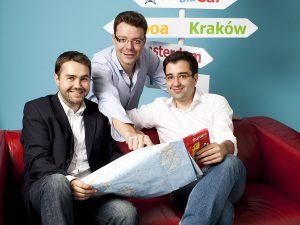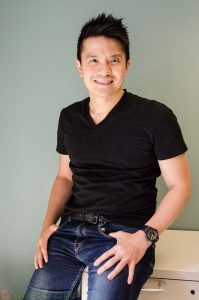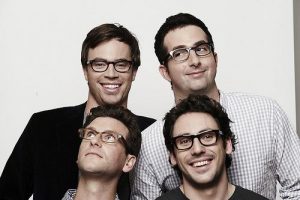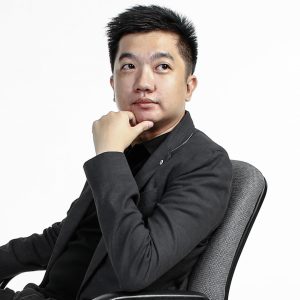BlaBlaCar : A Successful Startup that Simplified the Long-distance Journeys
Travelling,
for some people is not just moving from one place to the other, but
is something which includes emotions. Whether it be homecoming or a
trip to one’s dream place, it brings emotion with itself. But the
thing is, when it comes to travelling, the fare and the comfort don’t
come on the same page. If you need affordable rates, then comfort is
something that you need to compromise with, and that goes the other
way round when you need high comfort.
But, according to the famous saying, where there’s a will, there’s a way, people have found their way to comfort and affordable travelling through BlaBlaCar. Carpooling, certainly, is a way that gives you the comfort and the affordable rates at the same time. When it comes to carpools, BlaBlaCar is a name that arises from within.
BlaBlaCar is a platform for long distance carpooling. Its app and website connect drivers to passengers who are willing to travel long distances. The benefits of the carpooling service are that the cost of the journey comes into sharing that means you get to experience comfort at an affordable price. Also, the drivers with empty seats get filled in. As of now, BlaBlaCar reaches more than 10 million rides per quarter year. The success story of BlaBlaCar is certainly is the one that inspires depicting that a small picture can be changed into a bigger one.
The idea of the startup came up to the current CEO and the co-founder of the BlaBlaCar, Fredric Mazzella, who in the winter of 2003, decided to visit his home on Christmas. But eventually, he found himself left with no options to travel, as all the trains in France were booked due to the holiday season. He didn’t have a car either, so he was stuck. Luckily, his sister offered him a ride home and during that particular trip, he noticed that most of the cars that were around them, had empty seats. That’s when the idea clicked. He thought, “If I put all those cars with empty seats, in a search engine, such that people can search the available seats in those cars, just like they do while booking a train.” The idea in his mind was something that was unique, and soon after realizing it, he started to work on the same, with his friends Francis Nappez and Nicolas Brusson.

However, the journey to build this platform did not start smoothly. The problem that arose was in the implementation of the idea. Precisely, the implementation of a business model was the issue that the co-founders were facing.
In 2006, when the service was launched, it was the ‘Premium Model’ of the platform, that was released first. This model was free to use, but users could pay a monthly or annual fee to get their service higher on the search engine. But the model was discarded, as soon as the company realized that money won’t benefit in the long run and also, that the model could be unfair to many of the users.
Then, BlaBlaCar jumped to ‘Monthly Fee’ plan, but it too was eliminated. Then, they picked up an advertising model, but keeping users’ privacy at stake was unacceptable.
Then the company induced ‘Phone Bridge Model’ into their system. In this model, users could choose to hide their contact numbers while remaining reachable via a pay telephone bridge. But the catch here was that if the company wanted to go global, then the telephone operators all over the world were different. So, this effort also went in vain.
Once during this phase, Fredric asked his M.B.A. professor at INSEAD that whether it’s possible to run a business, without a business model, to which, he replied, “You need a business model or you’ll die!” Those words gave Fredric so much motivation that he ended up on the idea to take risks and learn. As a result, it took 5 years for the company to restructure itself.
Soon, the company saw that there were other companies, like Carrefour, IKEA, that wanted to give services of BlaBlaCar to their employees. After that, there was no stopping, as 200 more companies bought the BlaBlaCar service for their employees. But in 2012, this business model was again put to an end, as each company’s each employee had different requirements which made it difficult to give a collective solution.
But with today’s business model that BlaBlaCar has put into effect has helped them reduce their cancellation from 35% to around 2.5%.
The company has a motto of FAIL. LEARN. SUCCEED. As a result of its past experiences, the company is open to failures and openly says about them. But they ensure that once a mistake is committed, it won’t be repeated. BlaBlaCar has grown all over Europe, and Asia too. For now, the company serves in more than 22 countries, including India, the United Kingdom, Spain, Germany etc. BlaBlaCar, currently, is also in talks with France’s National Railway company SNCF for its bus division, so that the platform can provide bus services, too.
The startup that started as a minor one has gained more than $1.5 as funding. The company itself generates revenue of around $91 million. It’s worth, too, is $1.5 billion, which makes it the mater on its own.
The success story shows that personal needs can also be turned into a million-euro idea. It gives us the glimpse that how much innovative ideas our surroundings hold for us. Who knew that the startup which was such a unicorn sized, would grow up to such an extent that it will serve more than 22 countries. The success story of BlaBlaCar is certainly a one filled with eternal inspiration.

Raghav is a student and a content writer. He loves to write about emerging as well as the existing technologies around and about the ones who bring them to you. Music is the other passion that Raghav processes. It is like the fuel to his body. He is also in writing songs and poems. He believes that life is short, so live the best out of what you have got. Raghav considers himself a sci-fi guy, having stories and tech all around in his head, all the time.





